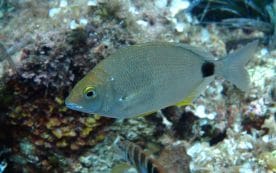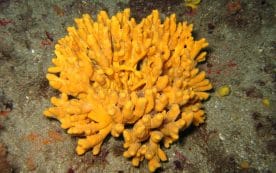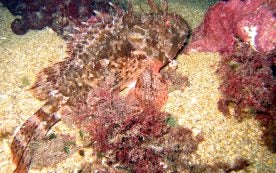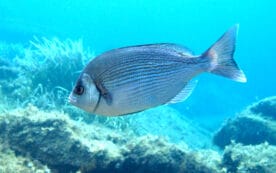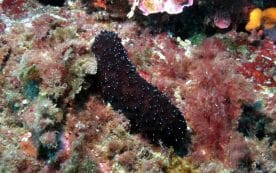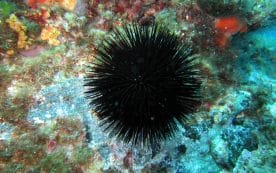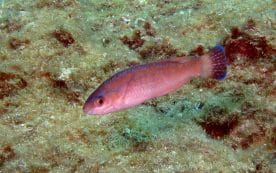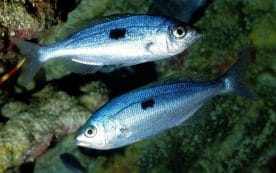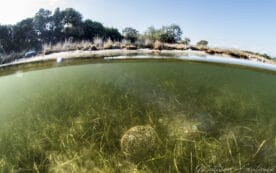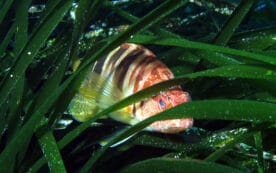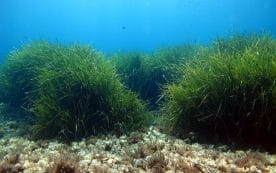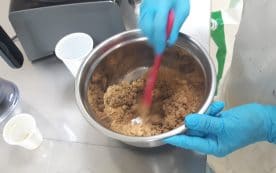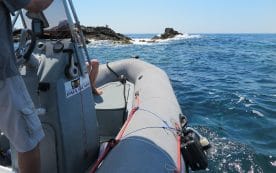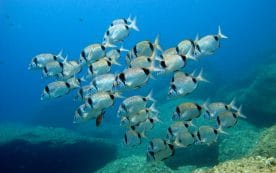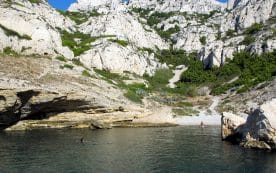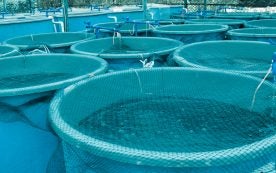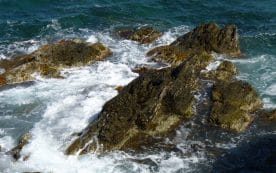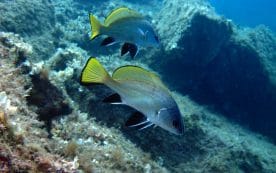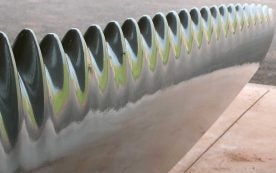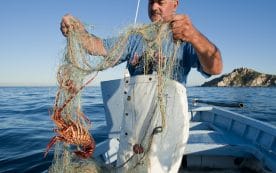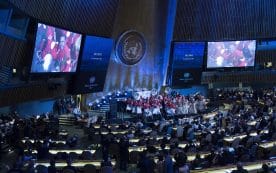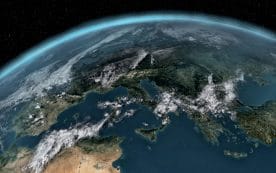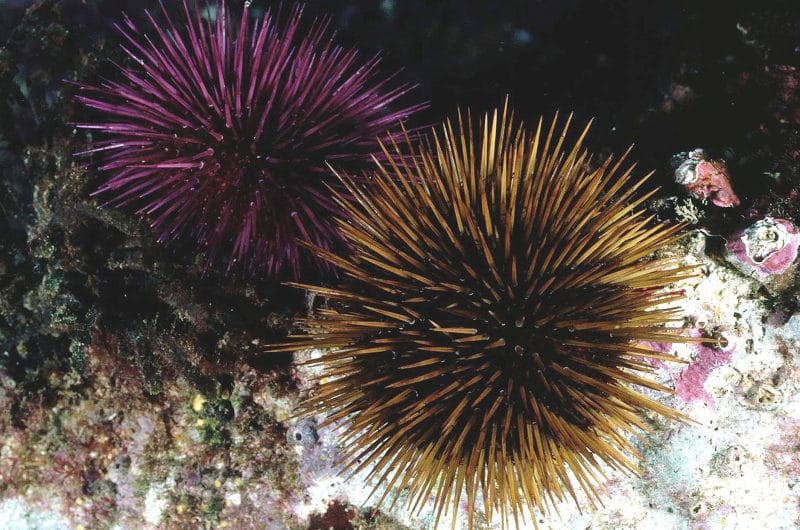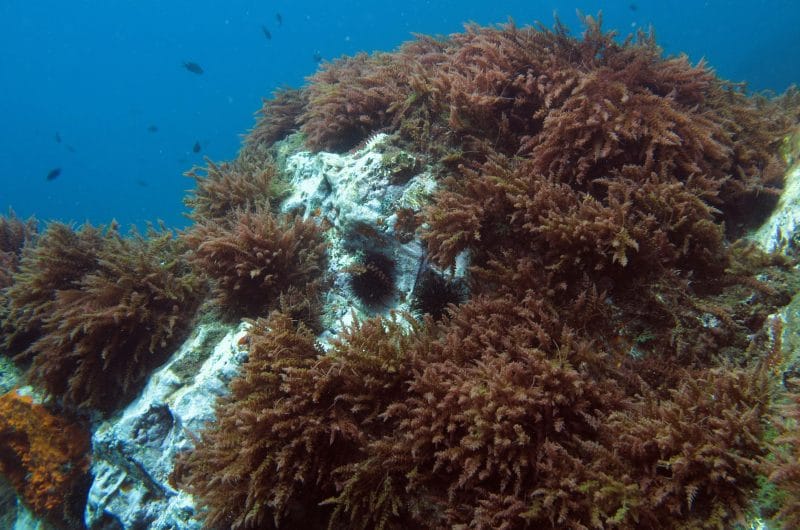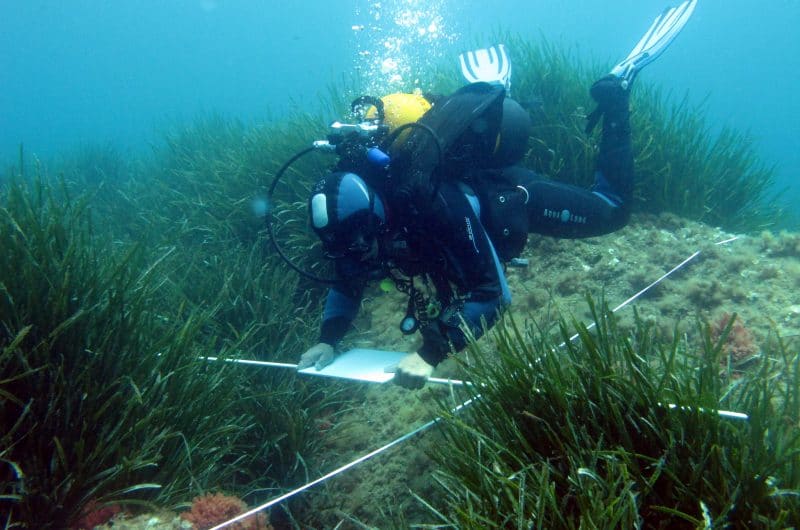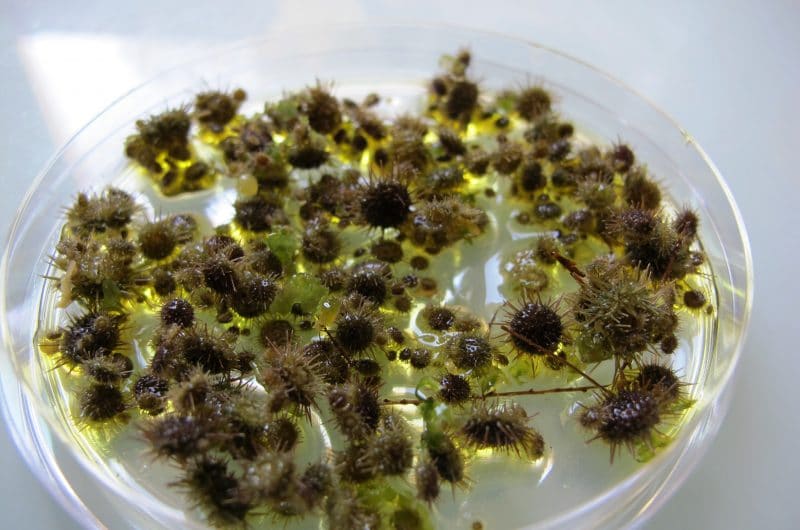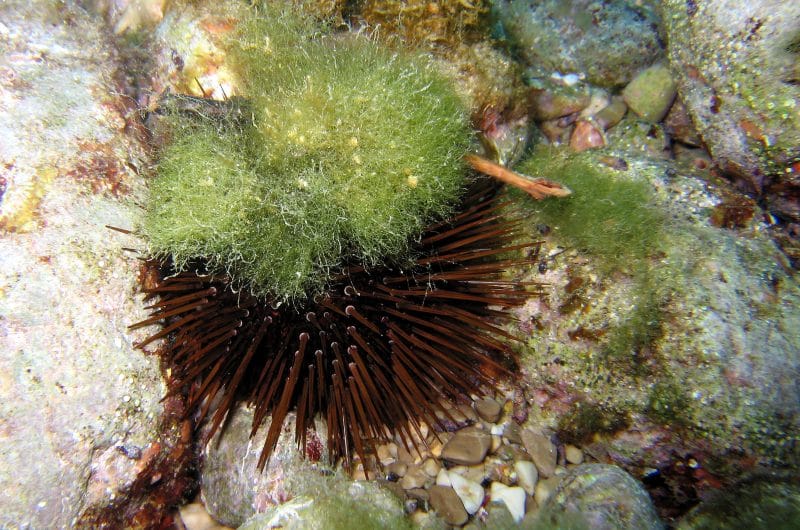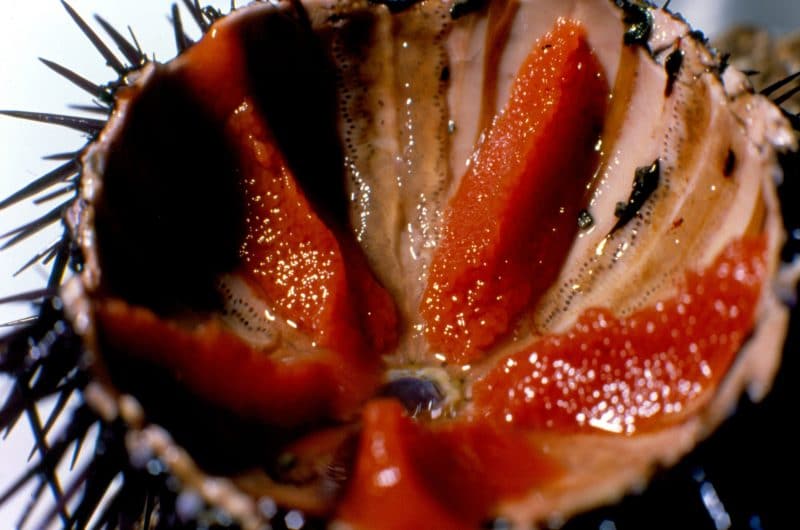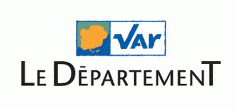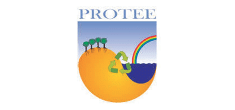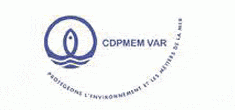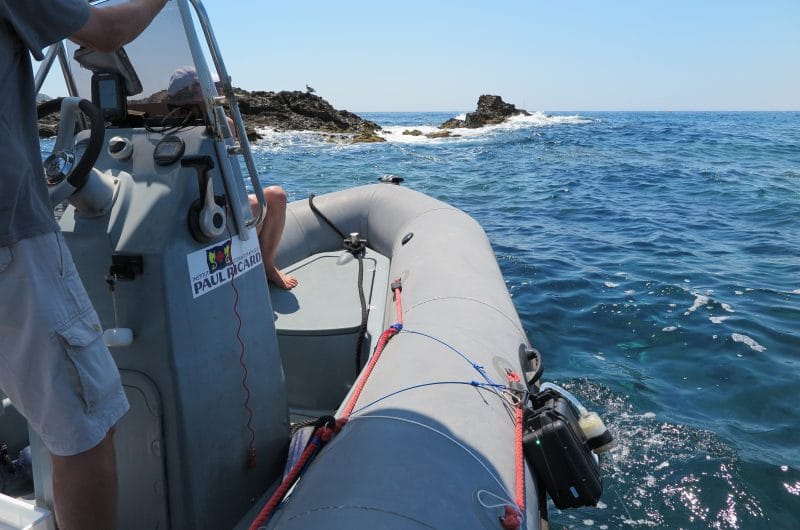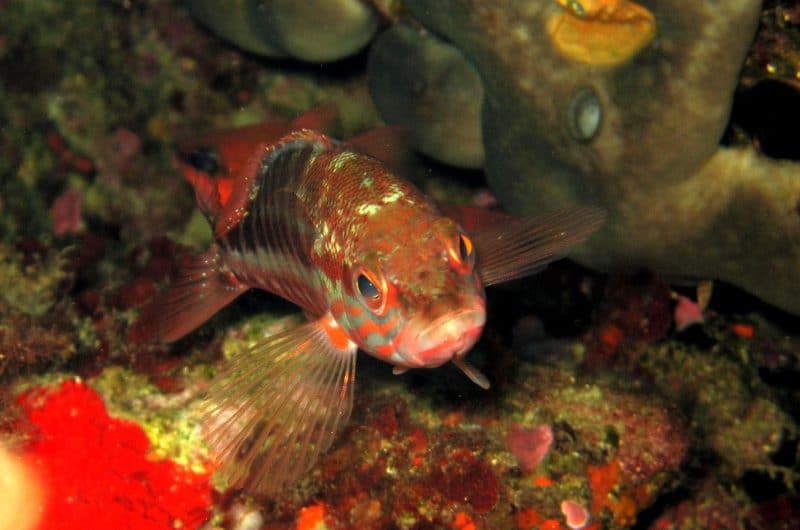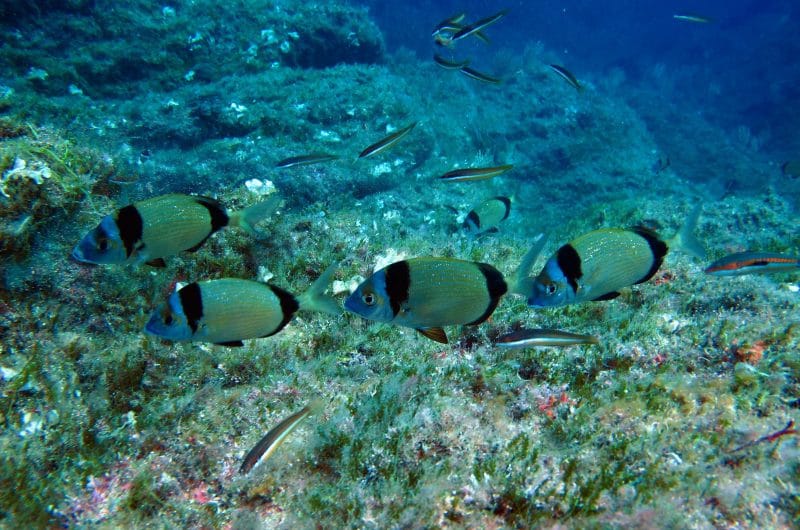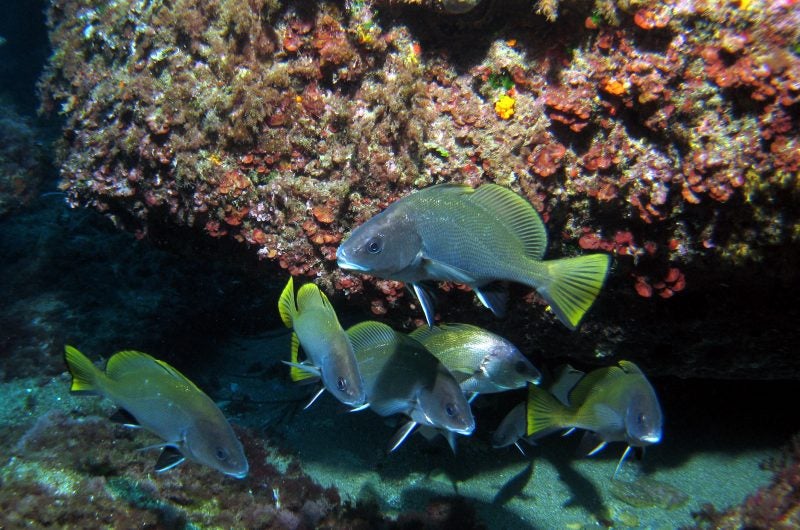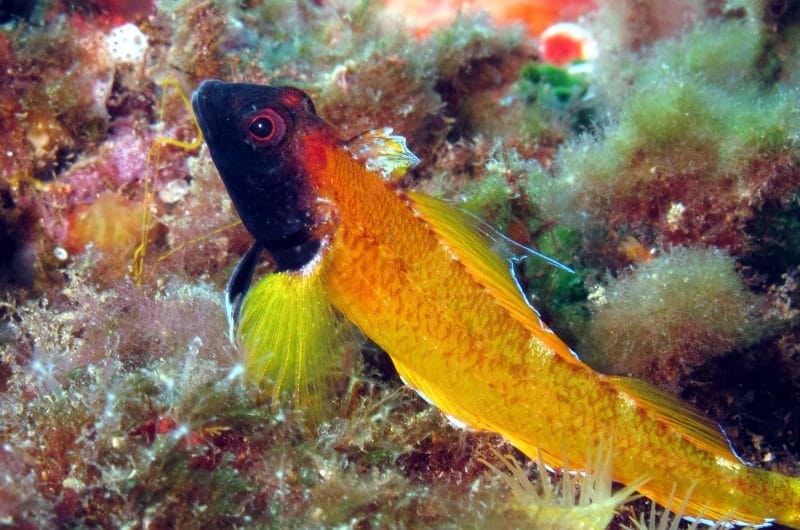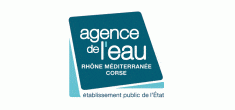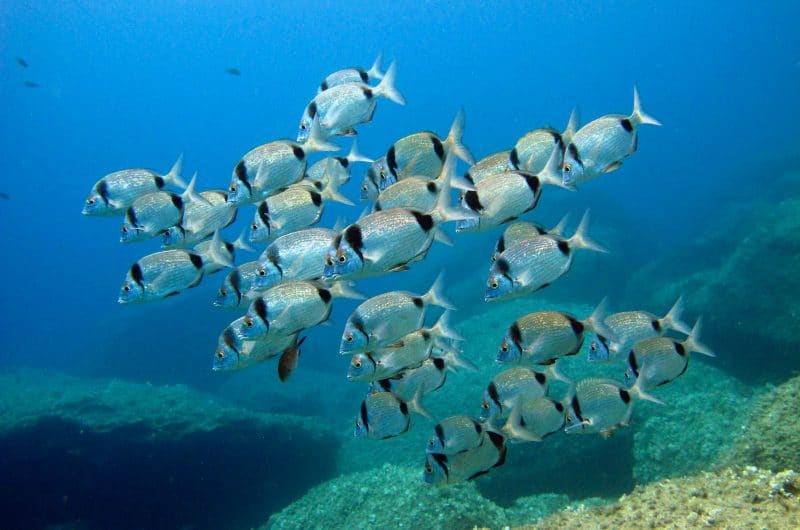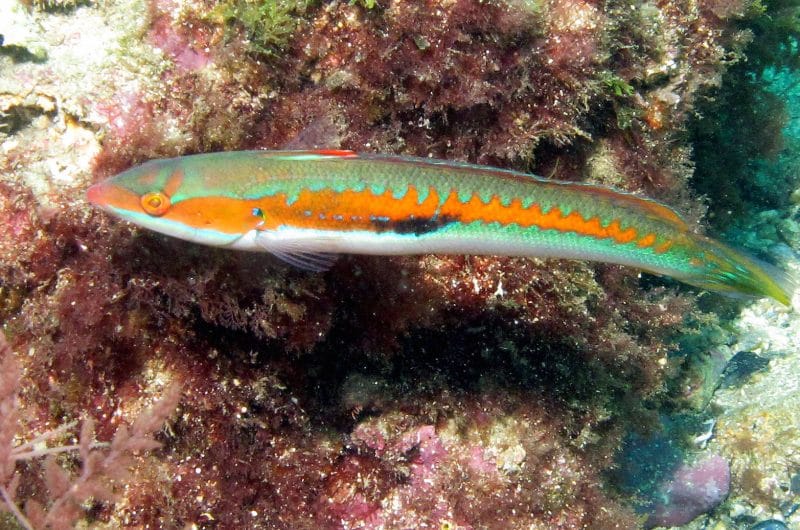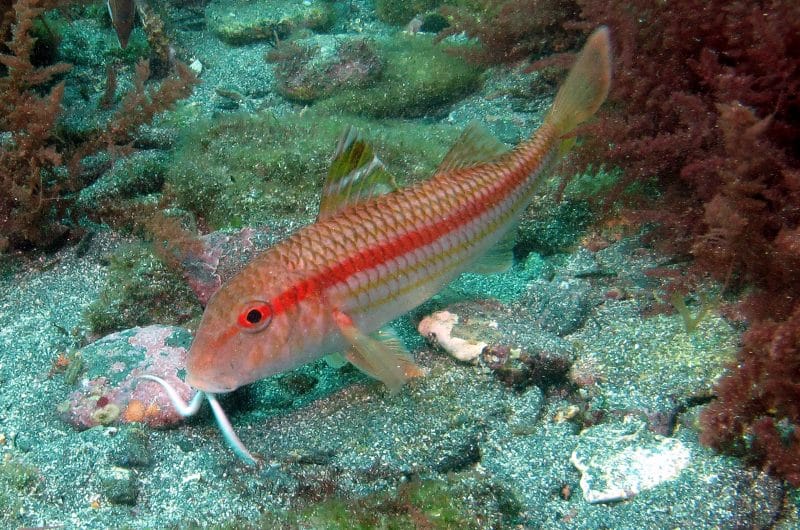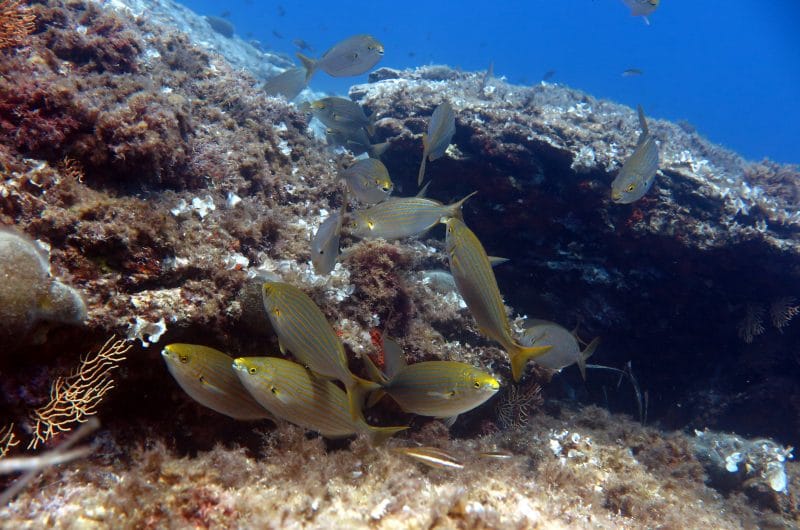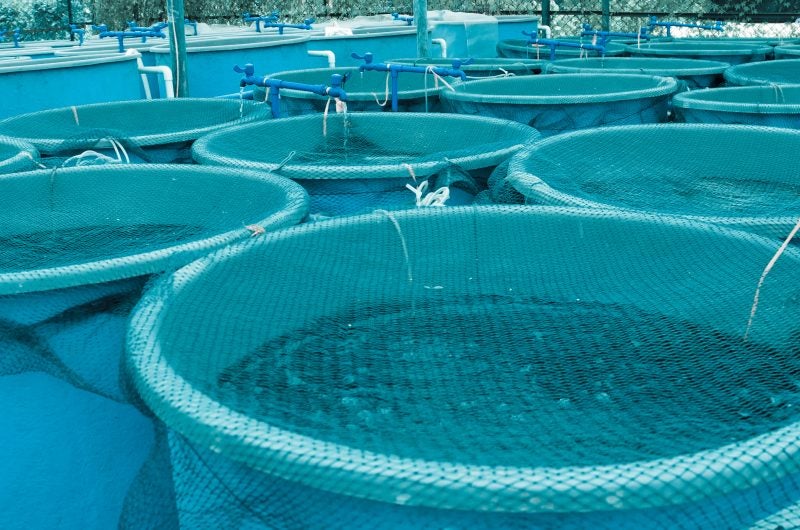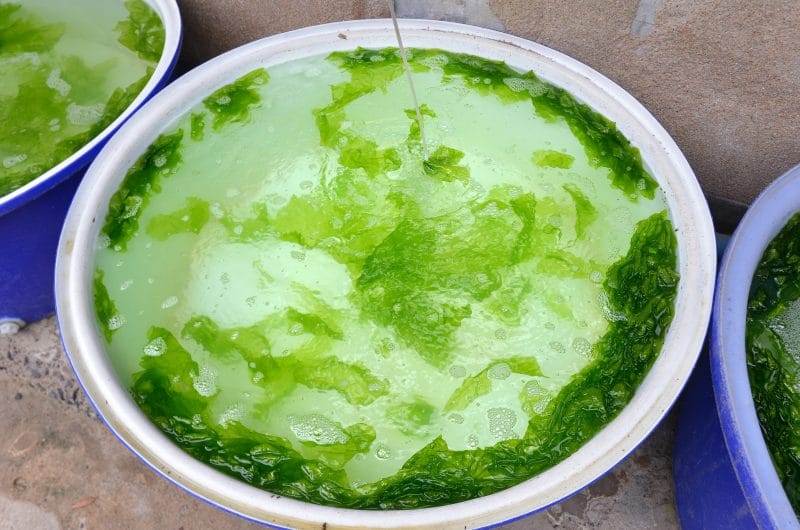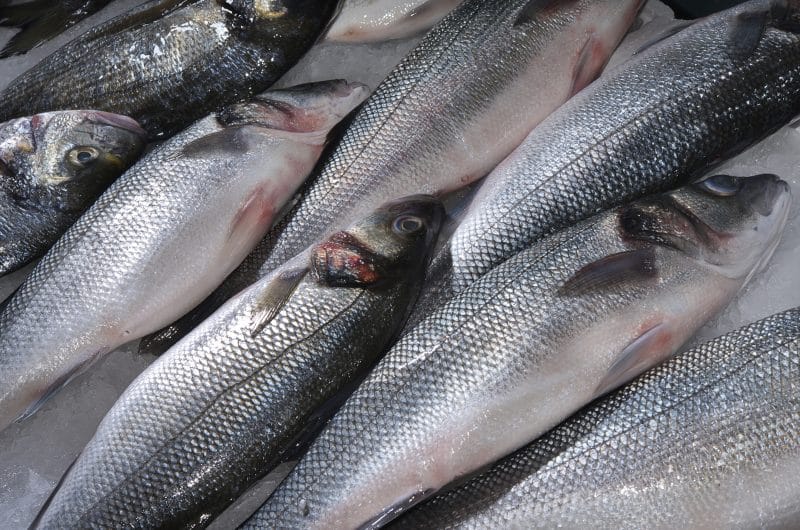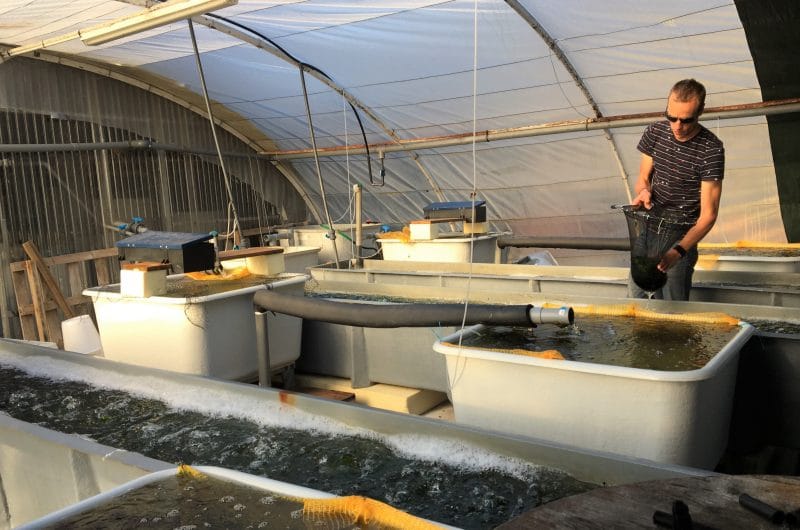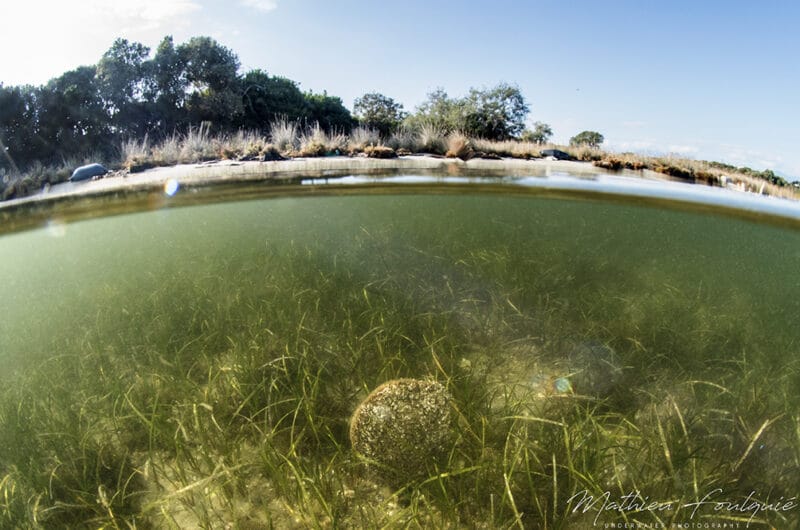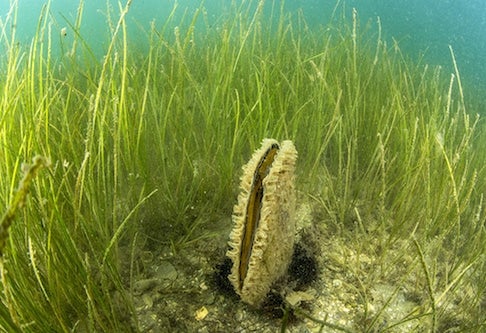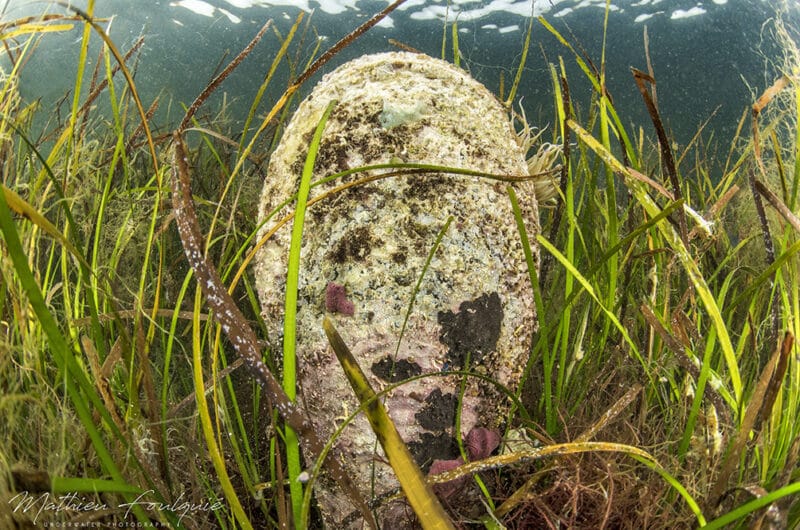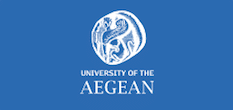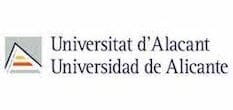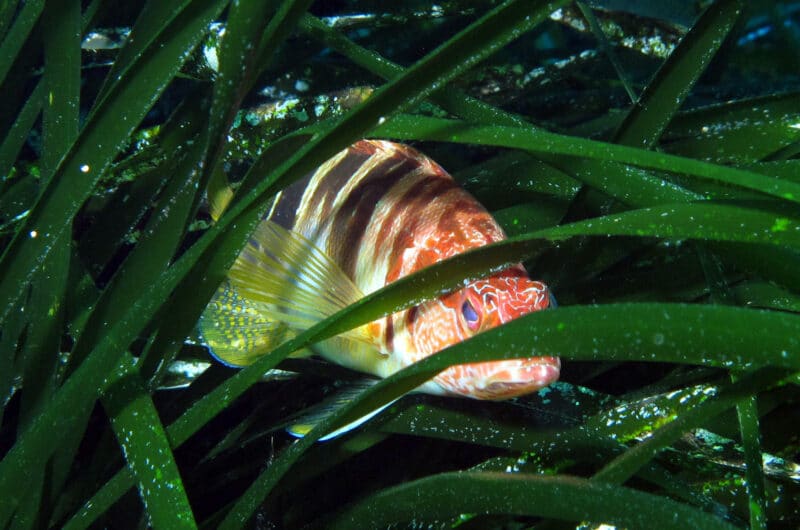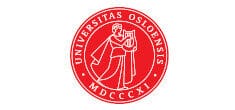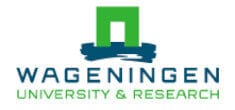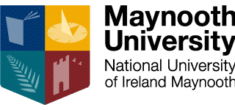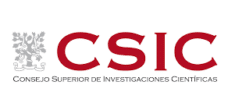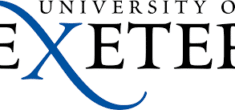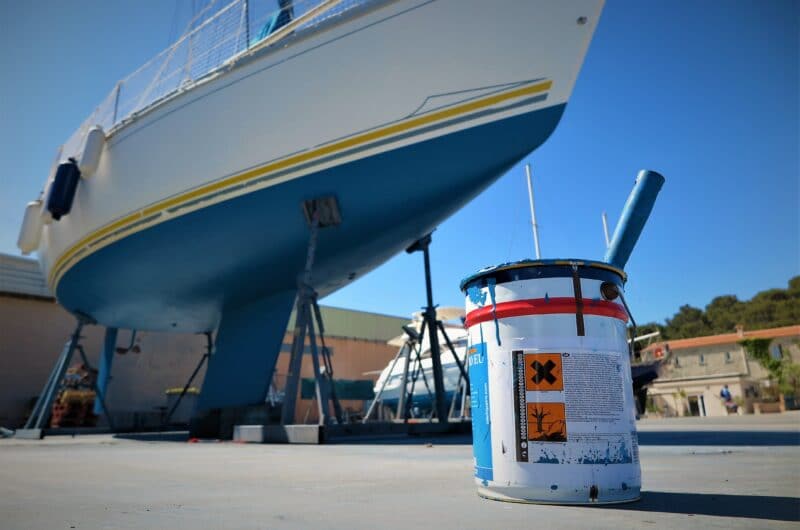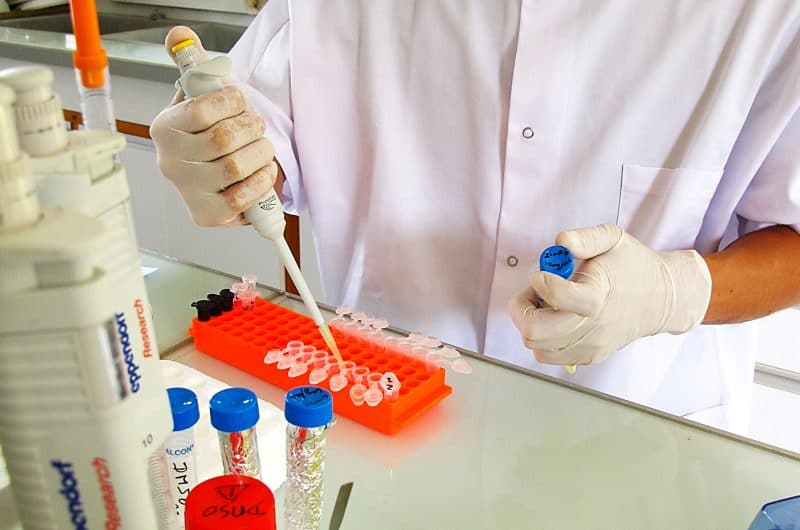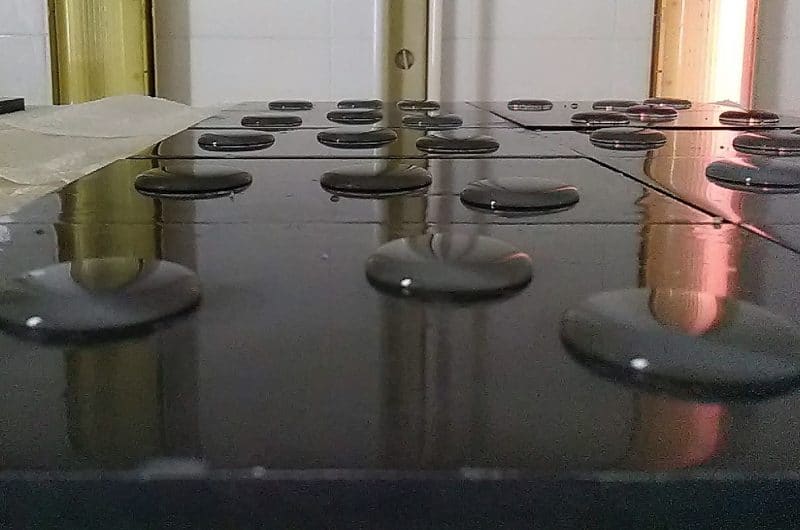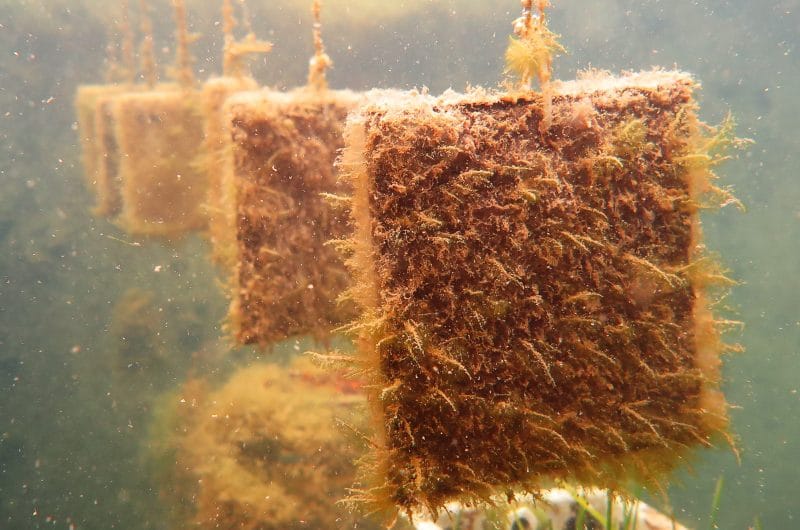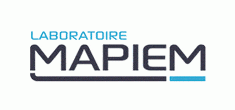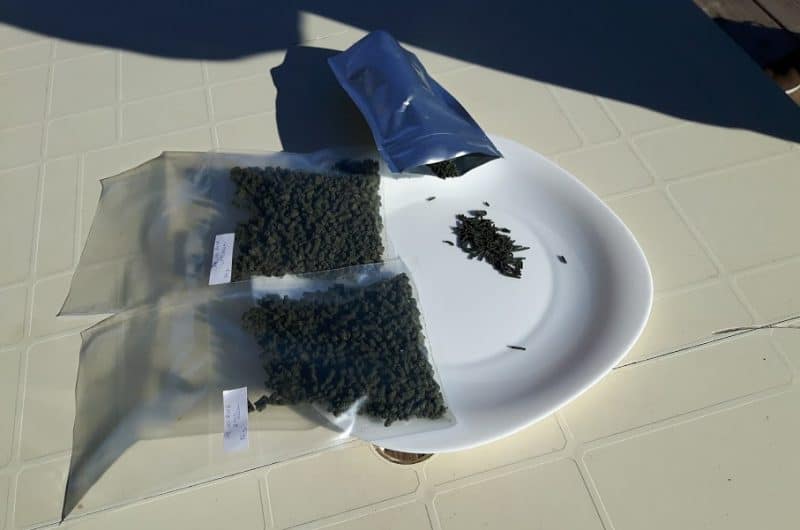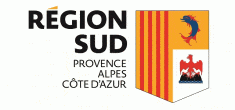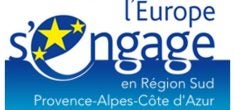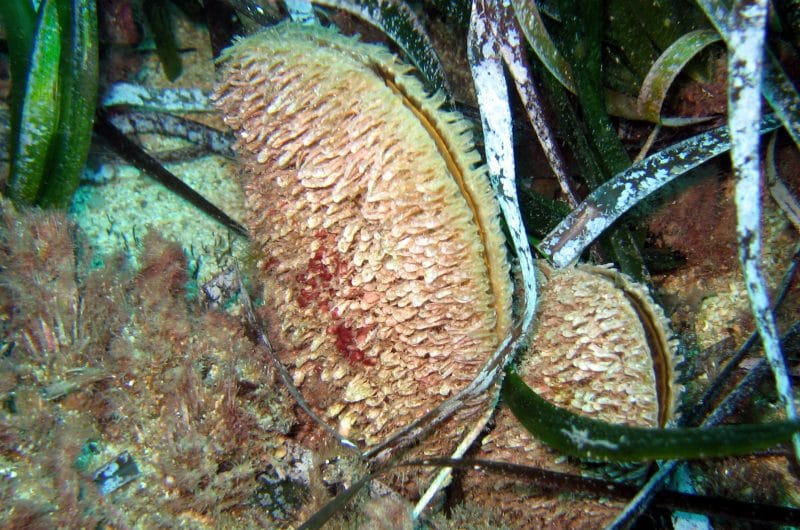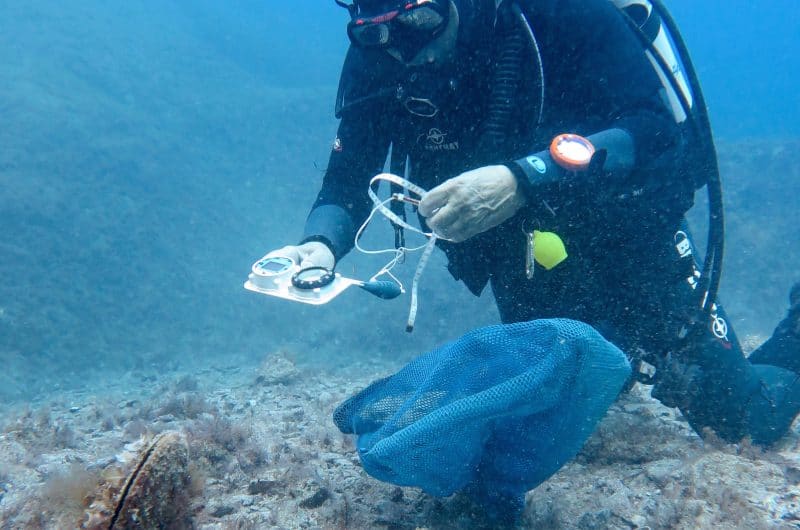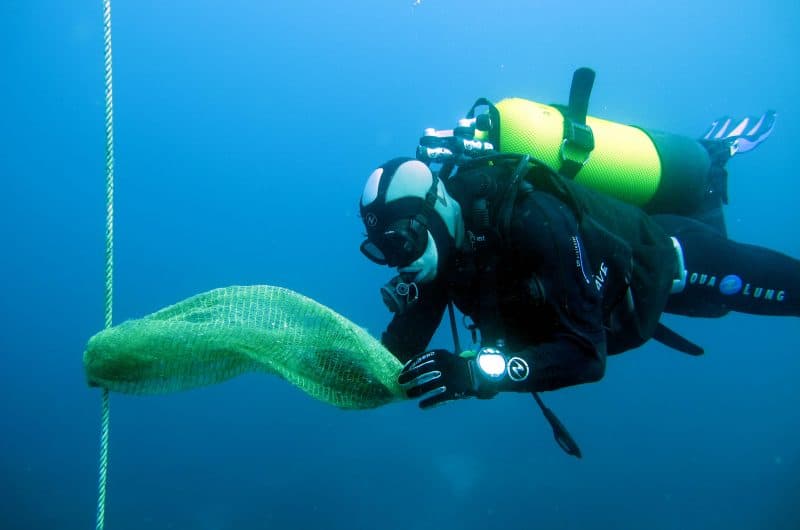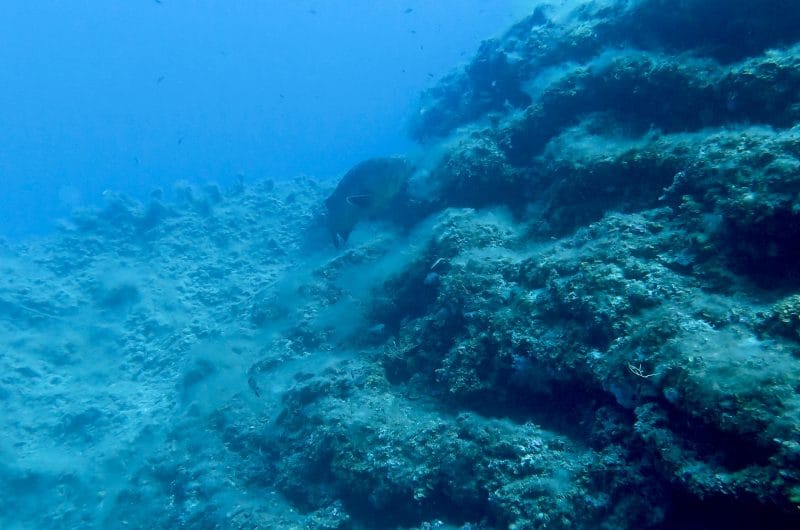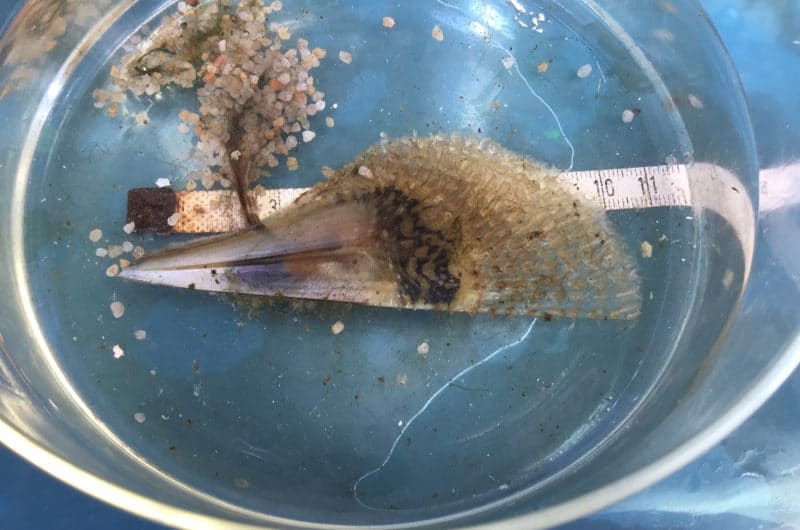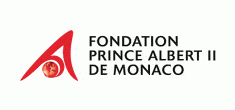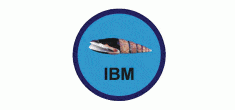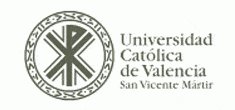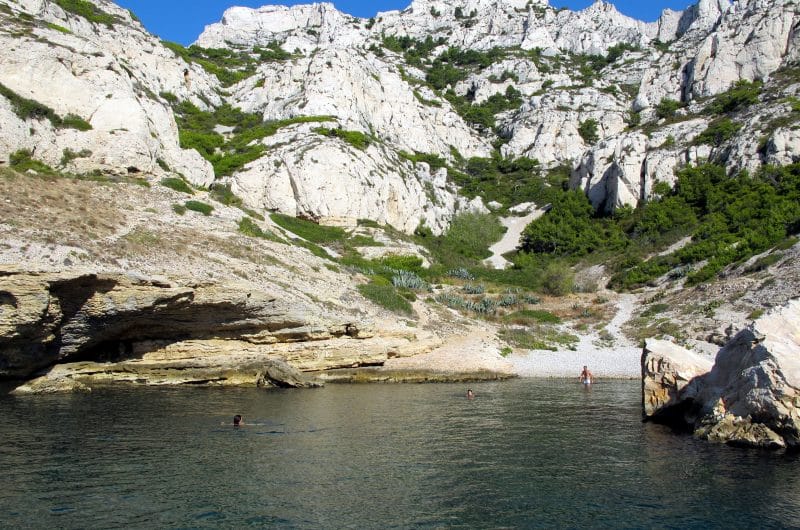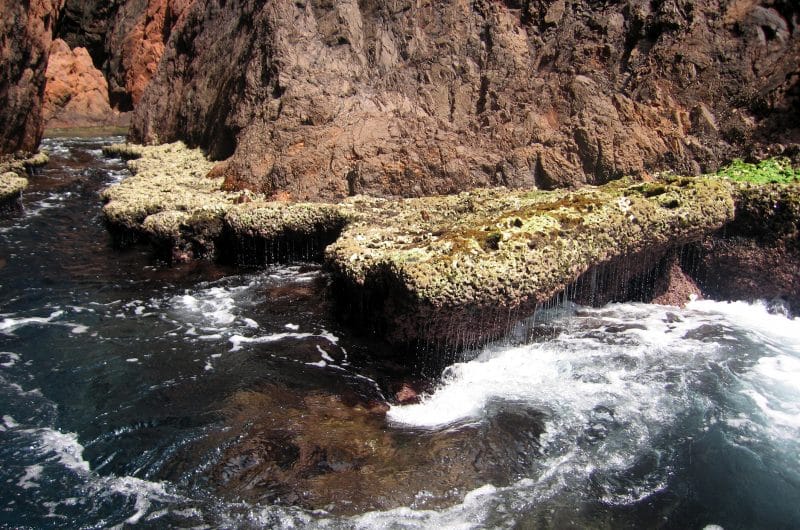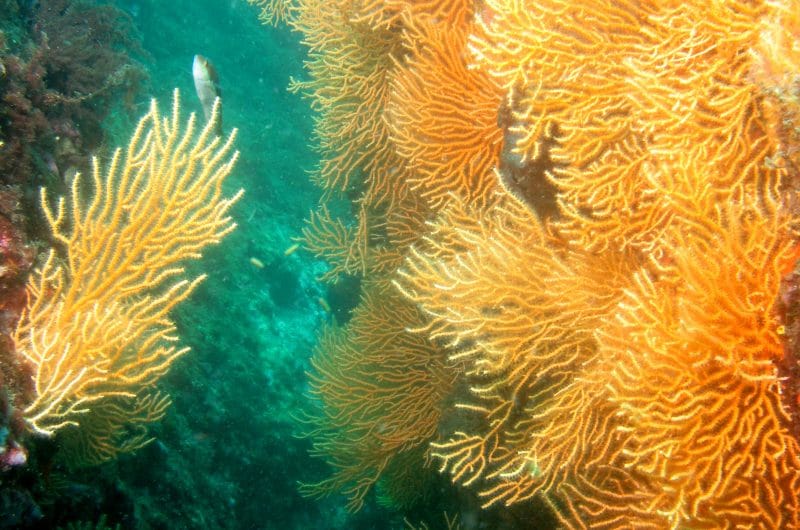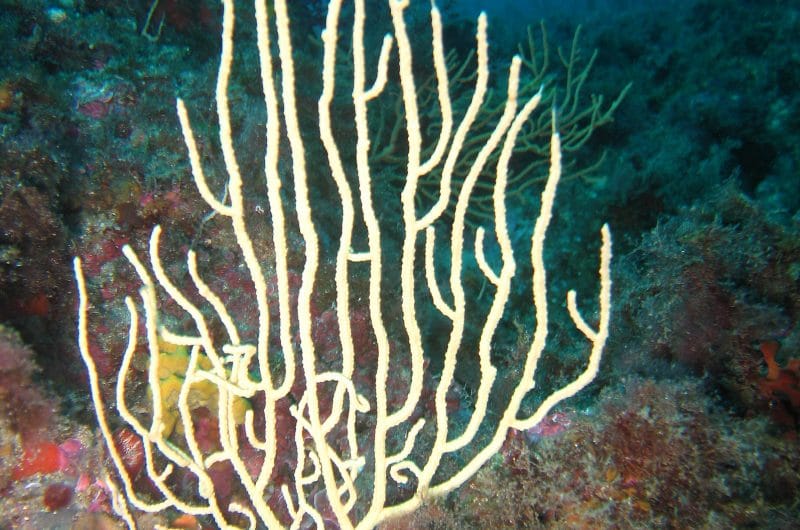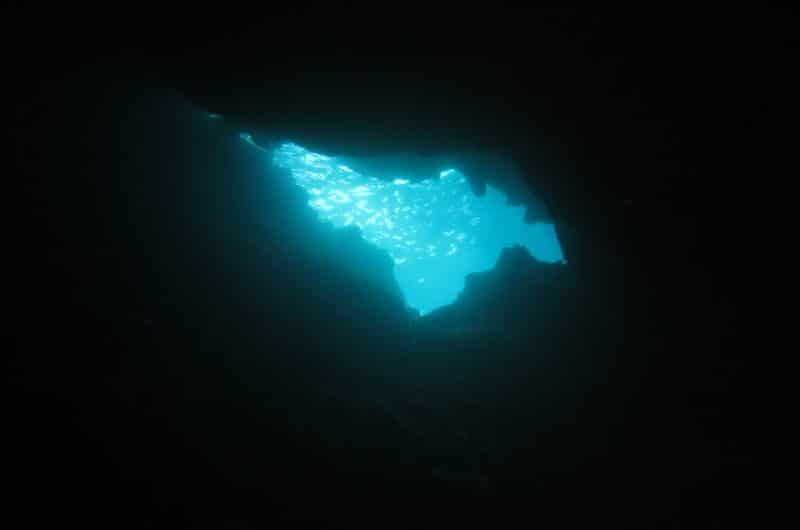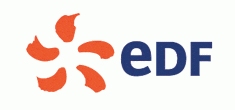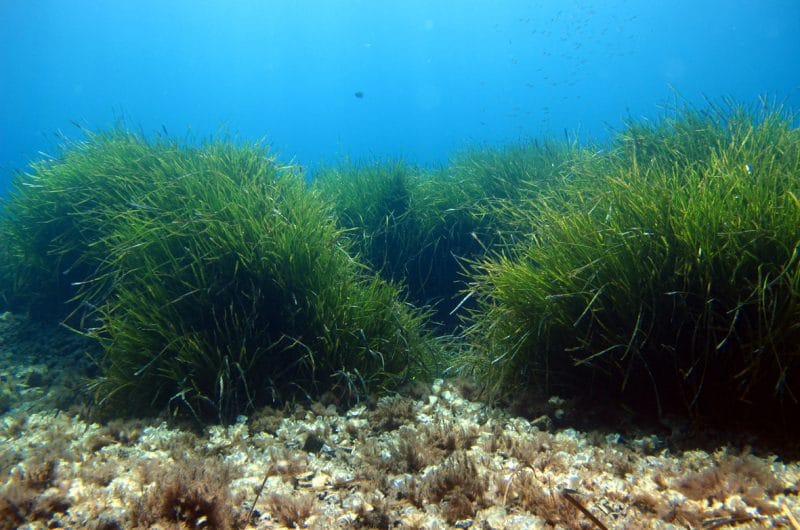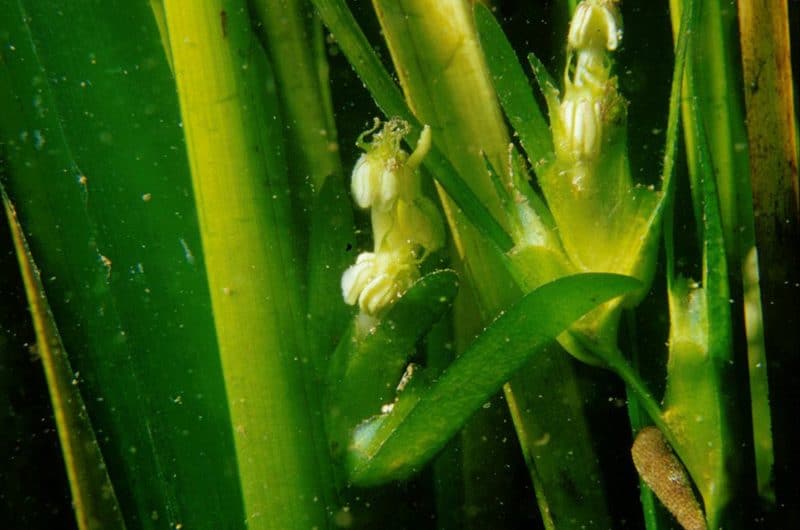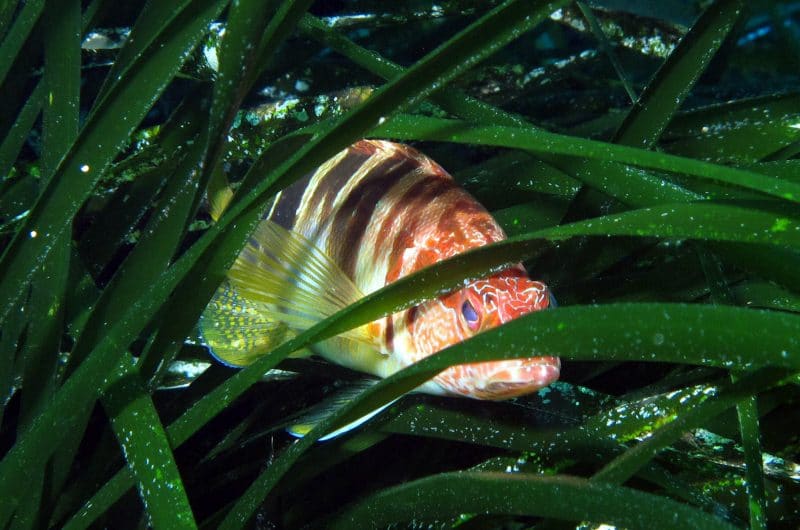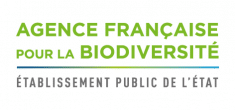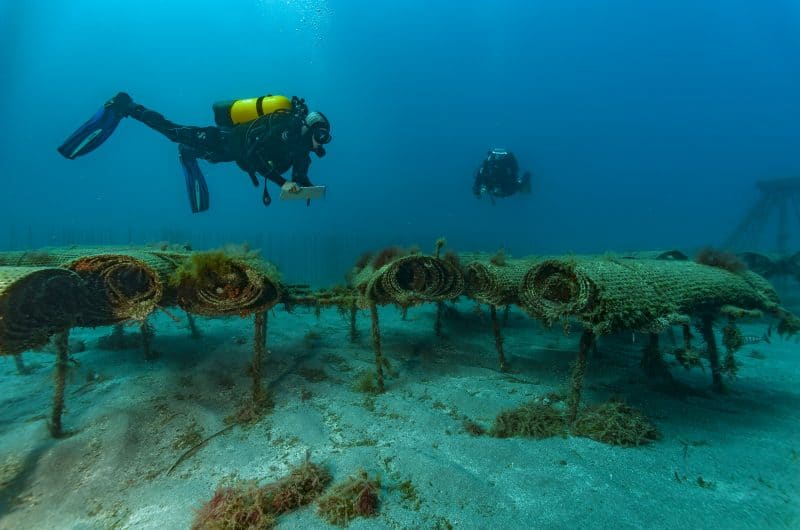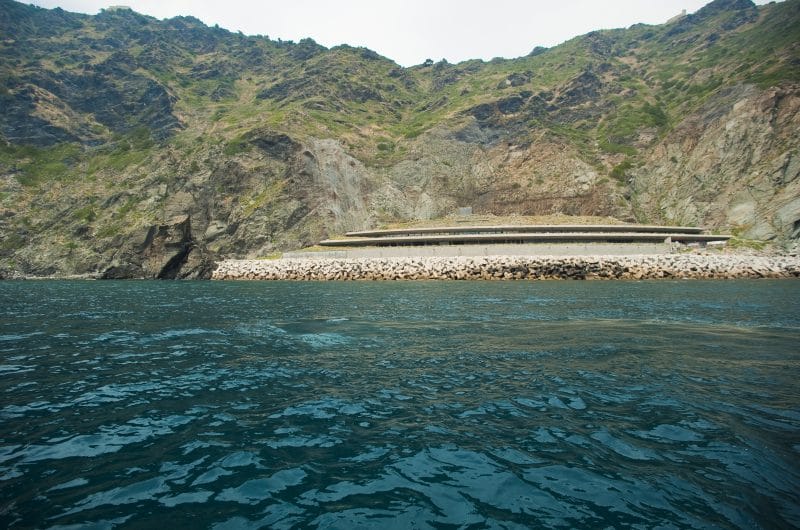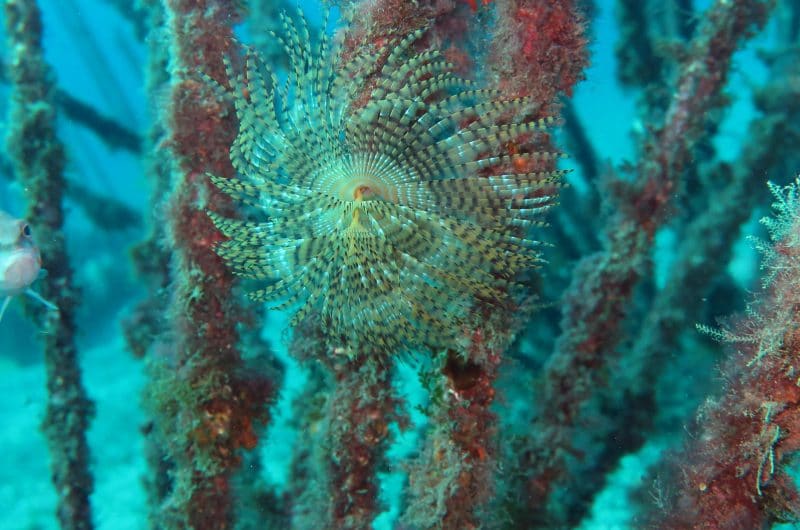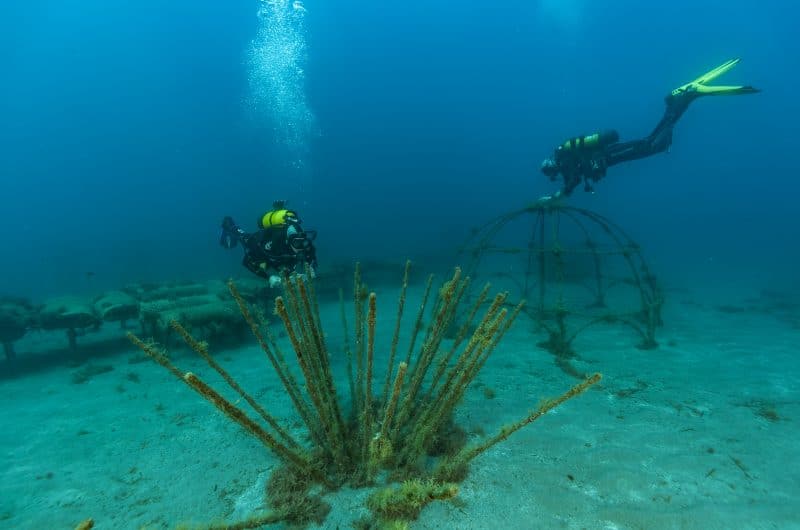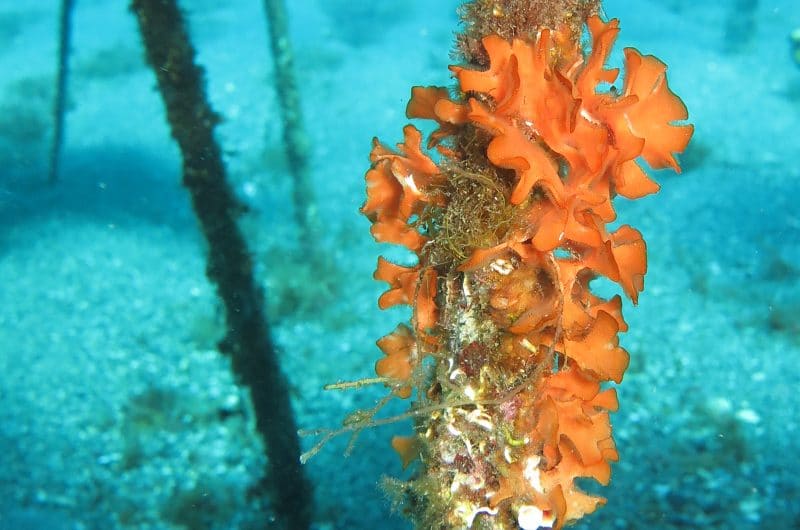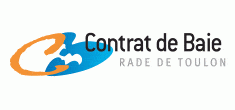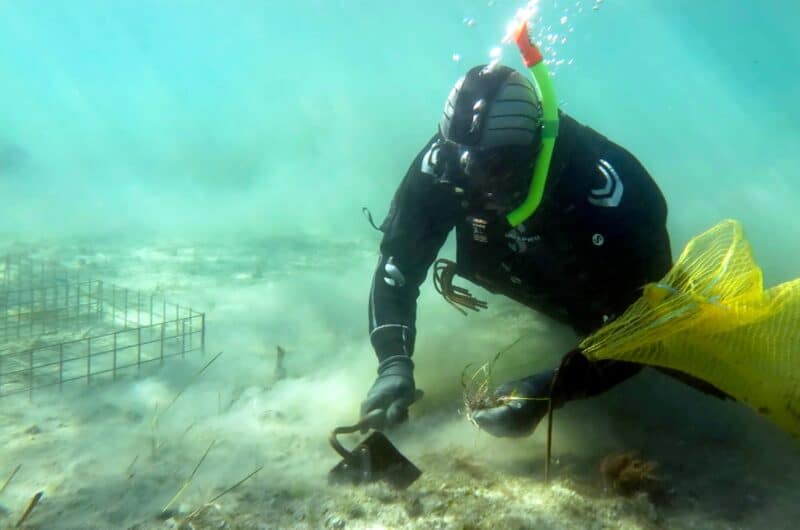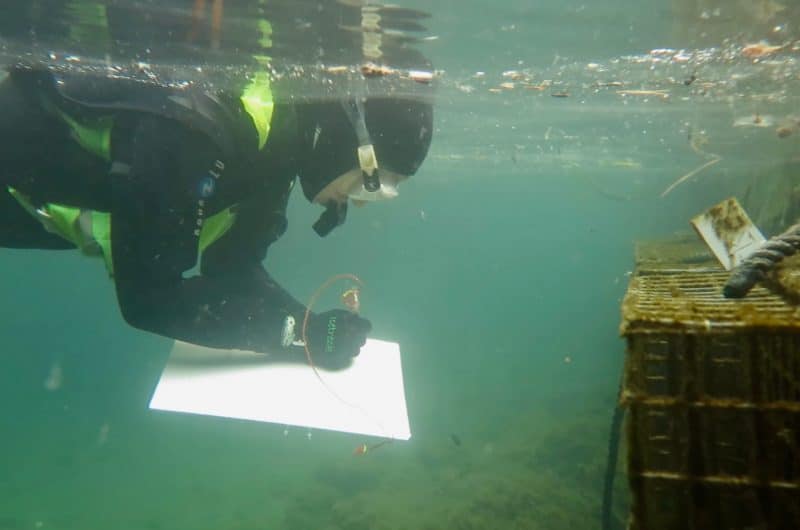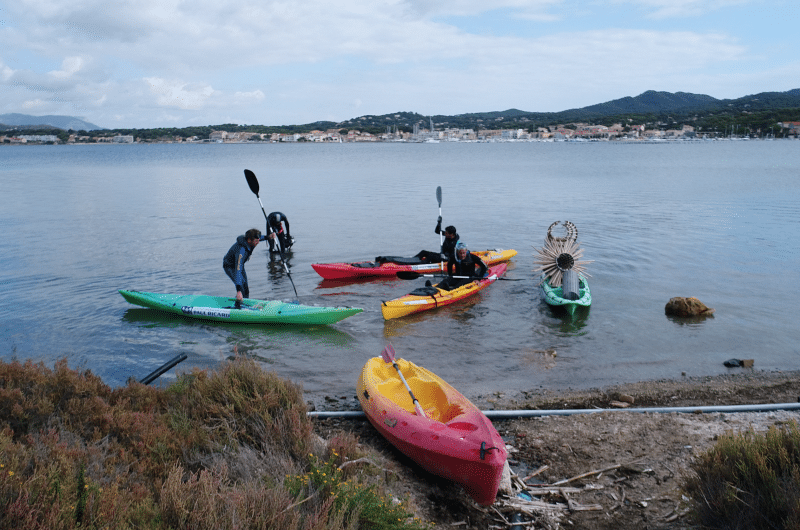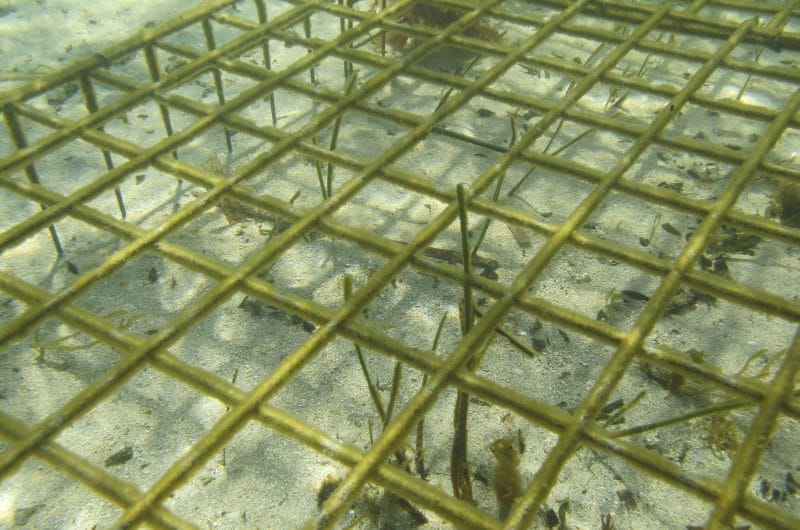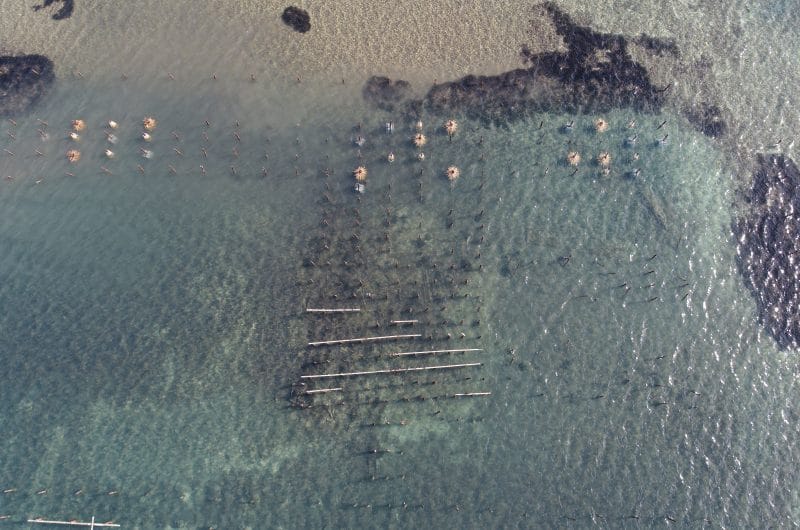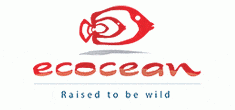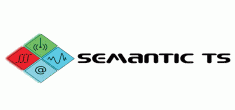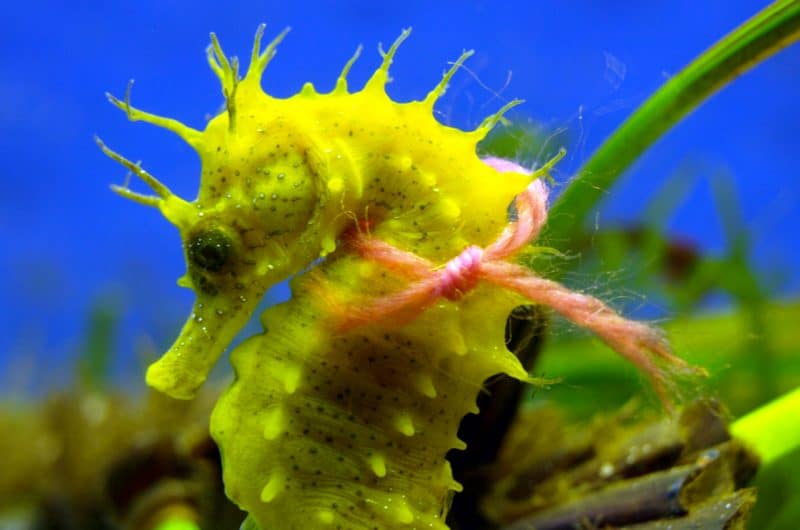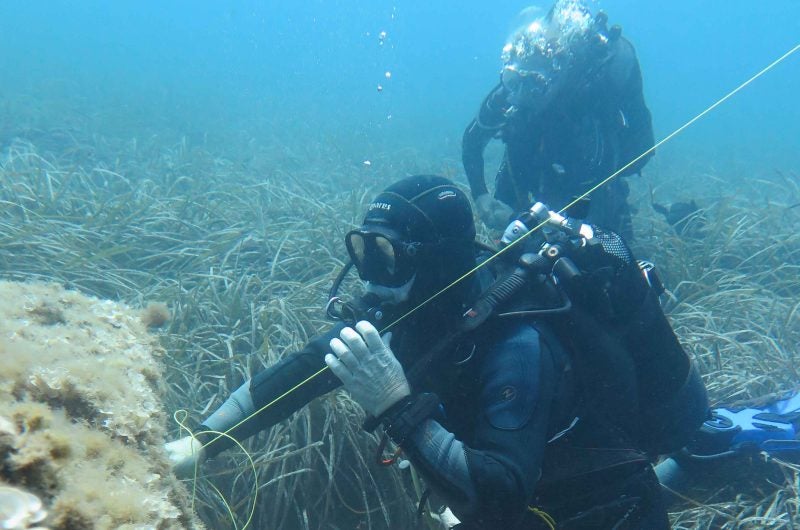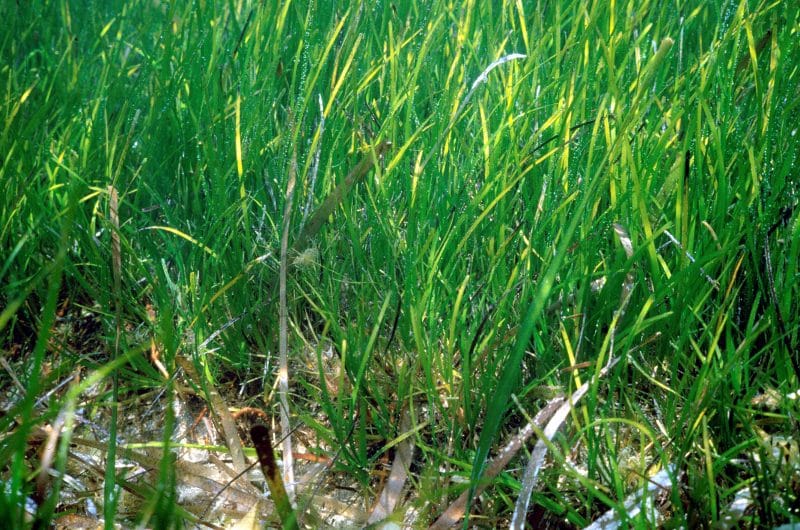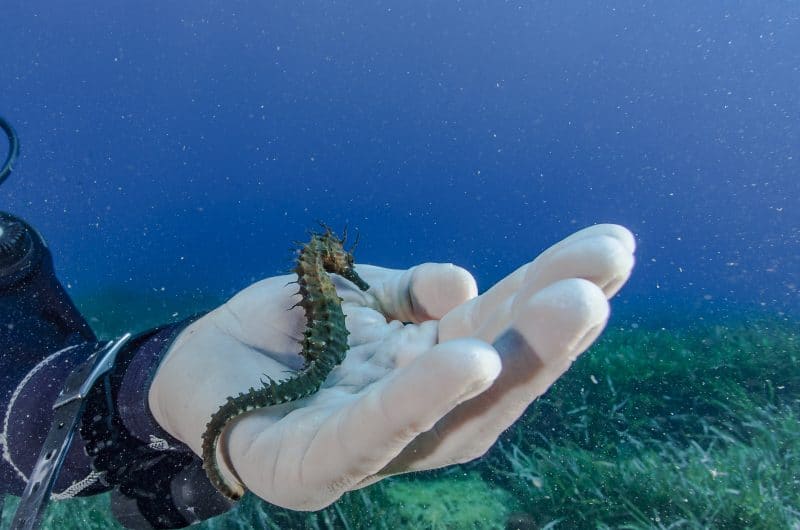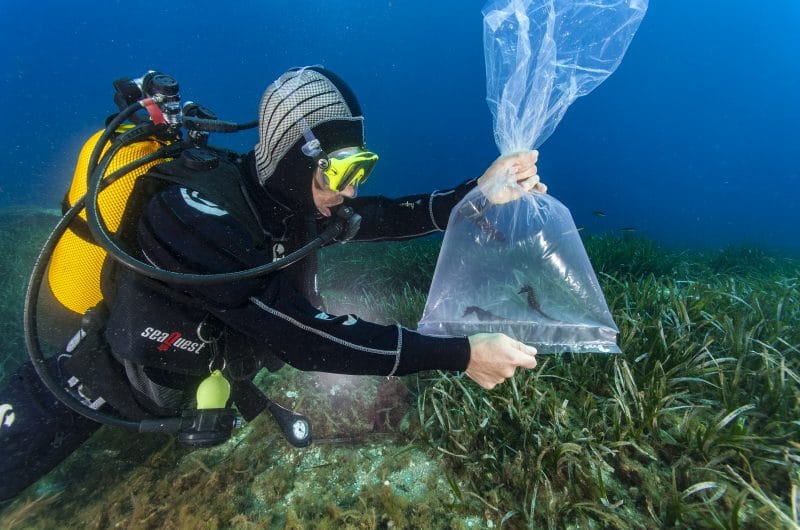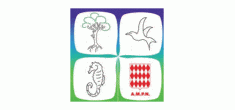Research Programmes
-
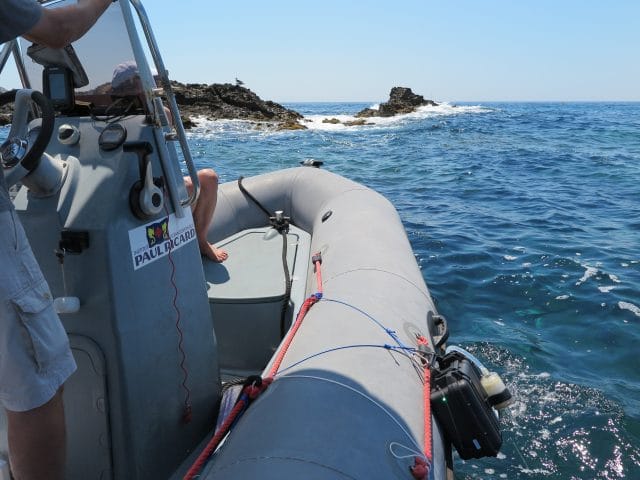
Environmental DNA (eDNA)
Monitoring marine biodiversity through water sampling -
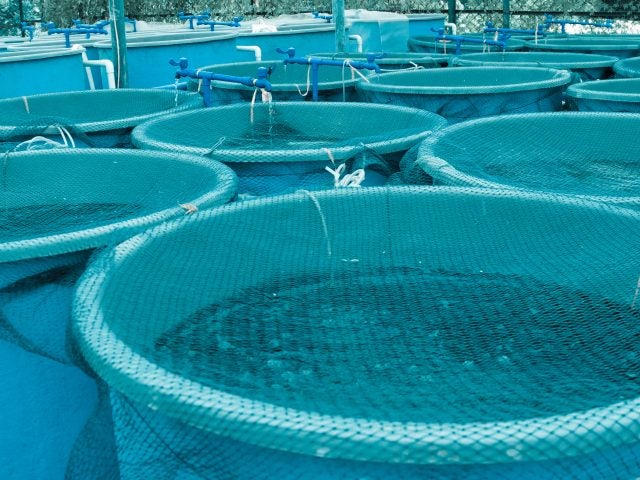
Integrated multi-trophic aquaculture (IMTA)
Creating a virtuous cycle -
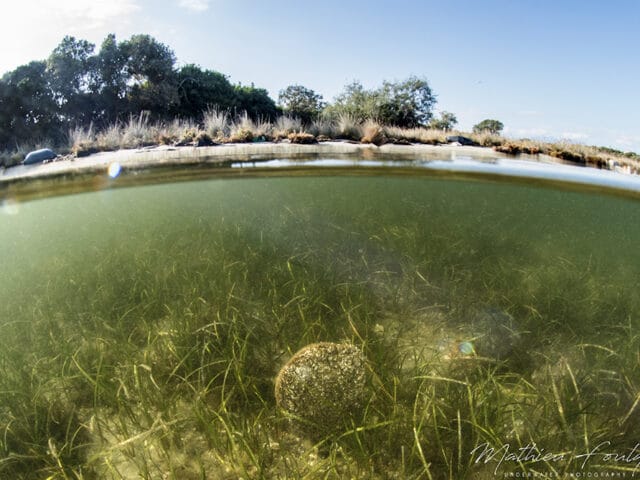
LIFE Pinnarca
Protecting and conserving the fan mussel -
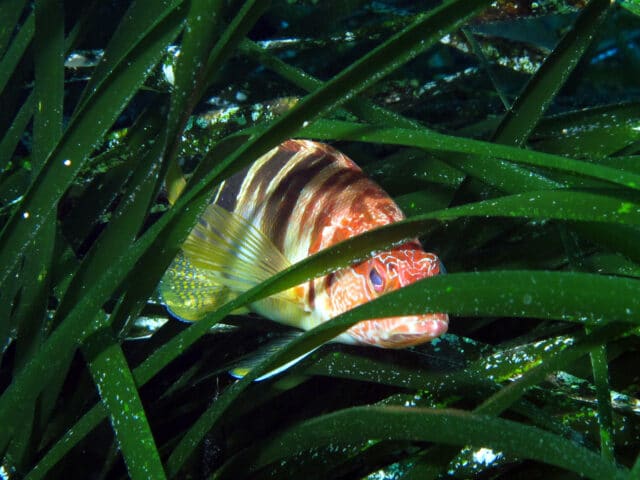
MaCoBios
Marine Coastal Ecosystems Biodiversity and Services in a Changing World -
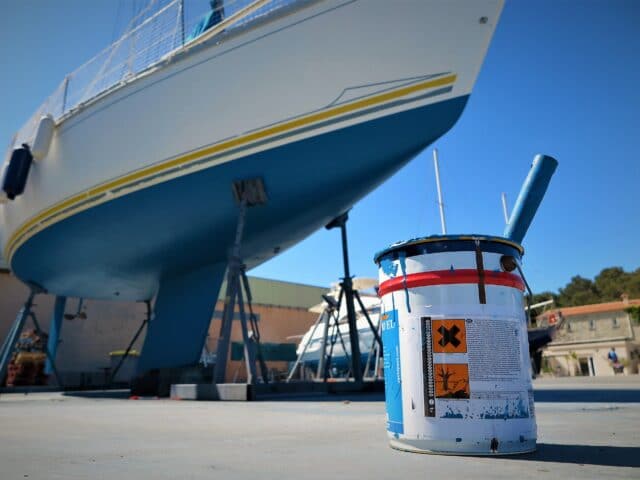
MARINA (MARINe Antifouling)
The benefits of bioinspiration -
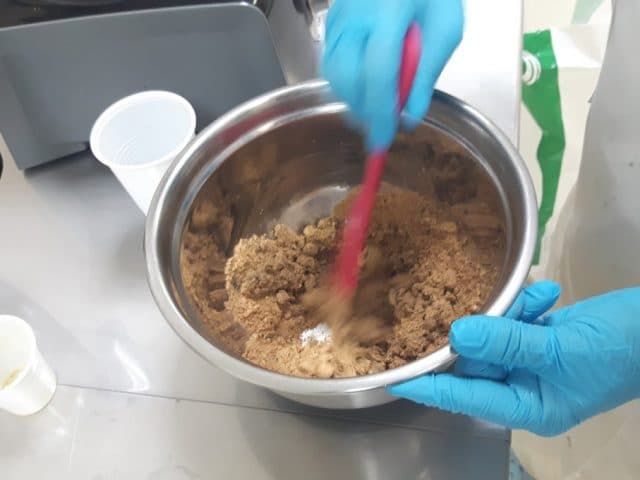
New Innovative Feed for Sustainable and Environment-friendly Aquaculture (NAIADE)
Insect proteins as fish feed -
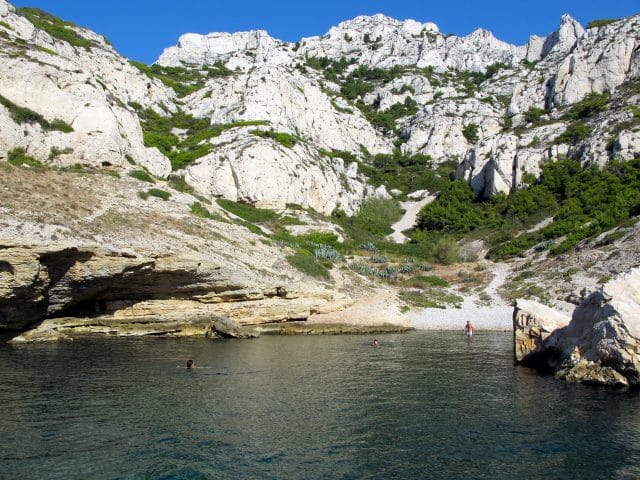
Podestat
Monitoring fauna and flora -
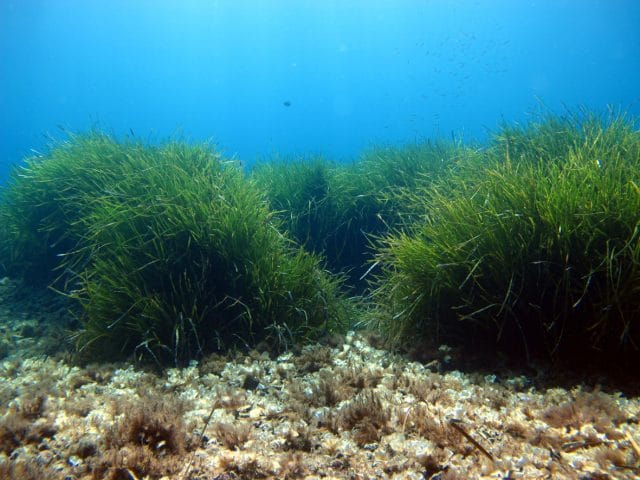
Posidonia oceanica seagrass meadows at the Lagune du Brusc
Ecological state -
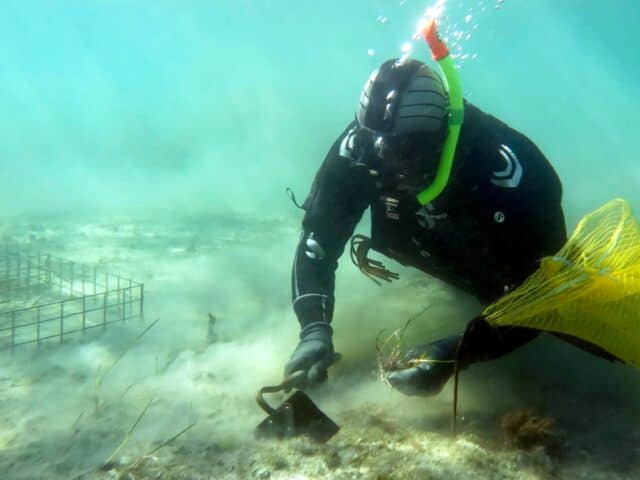
SAR-LAB
Repairing nature
Edible sea urchin
The purple or edible sea urchin, Paracentrotus lividus, is a focus of the Paul Ricard Oceanographic Institute’s research programmes, aimed at sustainably managing sea urchin stocks. Professional fishing of this highly sought-after species is regulated, but adult populations in Provence-Alpes-Côte d’Azur have begun to decline in recent years.
Research at the Institute has two goals. One is to work with local fisherfolk to asses and better understand the resource through counting with a view to managing fisheries more sustainably. The other involves producing juveniles through experimental breeding and ultimately setting up sea urchin farms. Experimental restocking has also been explored in some areas. This programme is part of the second Toulon Bay contract.
Environmental DNA (eDNA)
All living organisms leave trace DNA in their environment, through their faeces, urine or mucus. With this environmental DNA, we can identify every species that is or was recently present! The programme aims to develop this methodology as a tool for detecting and identifying marine species, giving us a more all-round assessment of biodiversity that includes:
– nocturnal or concealed species that are difficult to observe,
– morphologically similar species that can be hard to differentiate,
– fish species of particular economic or heritage importance,
– invasive or exotic species.
Once the methodology has been developed and tested in a marine environment, biologists will have a new tool in their toolbox (alongside conventional ones like diver observations, capturing, etc). Simply by collecting a water sample, we will be able to provide more data to scientists, policy-makers and managers of marine areas, especially Marine Protected Areas (MPAs).
Ich.T.O.
The Ich.T.O. project is an inventory of fish in the waters of west Toulon (Var). It involves identifying and estimating the number and size of the different species present with the help of scientific divers.
This sector lies between the Port-Cros and Calanques National Parks and has an important role to play in natural heritage conservation. The study will help us learn more about fundamental ecology and evaluate the fish resources in the area. The results should provide essential information for managers of fisheries resources and of the area, and also provide a baseline for monitoring the impact of global trends on the marine environment, from global warming and pollution to biodiversity modification and the appearance of southern or exotic fish species. This research programme is part of the second Toulon Bay contract.
Integrated multi-trophic aquaculture (IMTA)
The Paul Ricard Oceanographic Institute is working on a particularly innovative multi-trophic aquaculture programme aimed at farming several species together in the same tank so that the waste produced by one species can feed another, transforming waste into a resource. This will make farming more efficient, more profitable and more environmentally-friendly. Less food is required, waste is reduced and water is naturally filtered and cleaned by organisms in the “circuit”.
Our researchers are looking at farming sea bass alongside edible sea urchins, sea lettuce, mussels and sea snails. The fish faeces supports sea lettuce growth, the sea urchins eat the sea lettuce and the mussels and sea snails filter and clean the water. The aim is to offer an alternative to conventional aquaculture which is seen by some as a solution to overfishing but which also puts more pressure on the environment (pollution) and fish stocks (farmed fish are often fed with wild fish).
LIFE Pinnarca
The populations of fan mussels endemic in the Mediterranean, already strongly impacted by the human-generated pressure that is exerted on this bivalve and on its favoured coastal habitat, the Posidonia oceanica seagrass beds, have been severely hit by the emergence of a parasite in 2016 which decimated 99.9% of individuals at most of the known sites. A few pockets of resistance to this pandemic have however been observed in deltas and marine lagoons. The main aim of this LIFE programme, carried out by a consortium of European participants, is to guarantee the long term protection and conservation of the fan mussel
MaCoBios
MaCoBioS is a EU funded project whose main objective is to ensure efficient and integrated management and conservation strategies for European marine coastal ecosystems to face climate change. To this end, MaCoBioS has assembled a multidisciplinary team of experts to fill the lack of knowledge on the impacts of climate on the most important marine coastal ecosystems (seagrass beds, coral reefs, mangroves, coralligenous and calcareous bio-concretion assemblages, salt marshes and kelp forests).
MARINA (MARINe Antifouling)
When hulls become colonised by marine organisms (fouling), it slows down the vessels and makes the hull heavier, increasing fuel consumption, causing corrosion and spreading invasive exotic species. To prevent this from happening, the hulls are coated with antifouling paint, but conventional products are a source of pollution and are toxic for ecosystems.
Working in partnership with other research teams and turning to nature for inspiration, our researchers are studying natural molecules with the same function. There are many potential applications, since any submerged object can be rapidly colonised. This includes ships’ hulls but also scientific measuring devices, renewable energy turbines in marine environments, pipelines and port facilities.
New Innovative Feed for Sustainable and Environment-friendly Aquaculture (NAIADE)
In traditional fish farming, fish are fed with wild fishmeal. This fattening process using small forage fishes – sardines, anchovies, mackerel – exerts strong pressure on fisheries stocks. The main aim of the AIPAD project, carried out under the EMFF scheme (Southern Region / Europe funding), is therefore to develop a new feed based on insect proteins. This will involve assessing the adaptation of fishes to a new alimentary bolus from the physiological and morphological points of view, and analysing their growth rate in comparison with a classic feed. This experimental phase involving trials in tanks will provide the means for testing several feed compositions with a variation in the percentage of insect protein. The project has the additional aim of valorising the local fisheries resources by developing in due course a quality label for these farmed fishes, and also the aquaculture sector as an actor committed to the preservation of the natural environment.
Pinna SPOT
The Pinna nobilis fan mussel is the largest shellfish in the Mediterranean. As a protected, endemic species and an indicator of environmental quality, it is the subject of several research programmes at the Institute. Our current programmes involve counting and studying the genetics of populations on the Spanish coast, Les Embiez islands and marine reserves in Monaco and the Kotor ria in Montenegro.
Researchers are isolating the genome of Pinna nobilis and investigating links between populations in the Adriatic and the western Mediterranean basin. Small samples are taken from the animals for genetic testing. They are minimal and do not disrupt their metabolism.
Other research activities involve capturing larvae in open water using nets to collect juveniles from a few millimetres to a few centimetres long. These young fan mussels are then placed in an aquarium and fed with microalgae to study their growth rates.
Podestat
The Calanque de Podestat is part of the Calanques National Park near Marseille. It belongs to the energy company EDF, whose goal is to turn it into a natural laboratory for biodiversity observation and conservation.
EDF commissioned the Paul Ricard Oceanographic Institute to perform an exhaustive inventory of the calanque’s fauna and flora. By inventorying and mapping the entire 1.26 hectare zone, which reaches a maximum depth of 16 metres, researchers were able to determine the calanque’s condition when the Calanques National Park was established. Now that the baseline condition for the national park’s first year of existence is recorded, subsequent monitoring will show how the fauna and flora evolve over multiple years.
Posidonia oceanica seagrass meadows at the Lagune du Brusc
The Posidonia oceanica seagrass meadow is the main habitat at the Natura 2000 site Lagune du Brusc (Le Brusc lagoon). And this marine magnoliophyte, a species protected since 1988, provides major ecosystem services: stabilisation of soils and beaches, attenuation of swell, oxygenation of the water, nursery sites and carbon sinks. It is also a key habitat for 20 to 25 % of the Mediterranean biodiversity.
In this area, there are various types of seagrass meadow structures, including one that is virtually unique along the French coasts: a barrier reef, which encloses the Le Brusc lagoon between the island of Les Embiez and the town of Six-Fours-les Plages. This programme involves carrying out a monitoring survey, with the support of the French biodiversity agency Agence Française pour la Biodiversité (AFB), over a range of depths, from the barrier reef which reaches up to the surface down to the lower limit of the seagrass meadow, at depths of around thirty metres. The aim is to assess the ecological state of the Posidonia oceanica meadow over the whole of the Natura 2000 site.
REMORA
In the past twenty years, efforts to reduce pollution from urban areas have helped improve the quality of coastal waters. The Amphitria wastewater treatment plant at cap Sicié (near Toulon in the Var) was a pioneering, state-of-the art facility when it opened in 1997. It is still one of the most efficient urban wastewater plants in the Mediterranean today, treating waste from 350,000 residents of greater Toulon. However, some coastal habitats had already been so damaged before it opened that the quality of the marine environment is still below par.
The REMORA project is monitoring the colonisation of 36 artificial reefs of various shapes and sizes submerged in front of the Amphitria plant. The goal is to assess the technical and operational feasibility of full-scale restorative action in a degraded environment and to identify the best reef shapes for the fauna and flora. The modules were installed in 2015 and will be monitored for five years.
SAR-LAB
The Marine Strategy Framework Directive (MSFD) is the environmental pillar of the European Union’s integrated maritime policy. Its aim is to achieve or maintain good environmental status of marine waters, their seabed and subsoil by 2020 at the latest. To achieve this, the MSFD encourages the creation of test sites where environmental restoration methods can be applied. By implementing a whole range of innovative procedures, we can obtain feedback on how to favourably influence the environment.
The Institute has already clocked up many years of research into shallow coastal waters at the Brusc lagoon and around Les Embiez islands as a whole. Because of its heritage and environmental value, we selected the Brusc lagoon as a test site.
Today, the SAR-LAB project is running several experiments in ports and lagoon. They involve installing small, removable, non-invasive structures to allow the environment to function better (as a nursery for species in their early stages), planting cuttings of the underwater flowering plant, Cymodocea nodosa, and restoring the good environmental status of a wetland. At the same time, the site will be continuously monitored to acquire more scientific knowledge and environmental restoration techniques.
Seahorses
Our researchers are currently reintroducing seahorses born at the Institute into the Larvotto reserve in Monaco. The goal is to see if they all survive, if they remain in the same location or leave the area, and if they start to breed. Seahorses are becoming rare in the Mediterranean mainly because of coastal degradation and human activities. Releasing them into a fully protected reserve creates a high chance of success and could become a model for other protected areas.
The parents of these juvenile seahorses have all been genetically identified by the PROTÉE laboratory (PROcessus de Transferts et d’Echanges dans l’Environnement) at Toulon University, and are tagged. If they do reproduce, we will be able to trace their family tree over several generations! Regular monitoring will take place for the next two years in Monaco.

